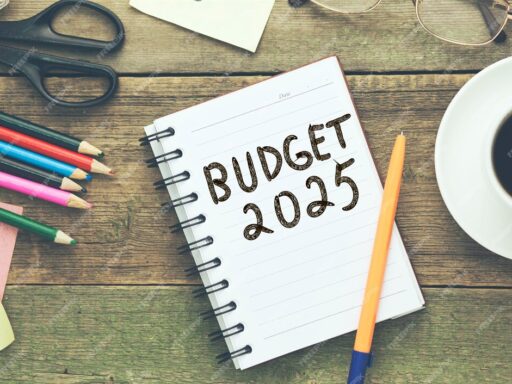
Imagine this: It’s the end of the month, and you’re staring at your bank account, wondering where all your money went. You paid the bills, grabbed coffee with friends, and maybe splurged on that new gadget—but somehow, you’re still short. Sound familiar? I’ve been there, and it’s exactly why I turned to zero-based budgeting, a method that transformed how I manage my finances. In this guide, I’ll walk you through everything you need to know about zero-based budgeting (ZBB), from its core principles to practical steps, with a sprinkle of personal stories and expert insights to make it stick. Whether you’re a budgeting newbie or a seasoned saver, this post will equip you with the tools to take control of your money.
What Is Zero-Based Budgeting?
Zero-based budgeting is a method where every dollar of your income is assigned a specific purpose, ensuring your income minus expenses equals zero. Unlike traditional budgeting, where you might track spending loosely, ZBB requires you to plan every cent before the month begins. Think of it like giving every dollar a job—whether it’s rent, groceries, or that rainy-day fund. I first stumbled across this concept when I read about it on Investopedia, and it felt like a lightbulb moment. No more guessing where my money went; every dollar had a purpose.
The beauty of ZBB lies in its simplicity and intentionality. It forces you to prioritize your spending, align it with your goals, and cut out unnecessary expenses. For example, when I started, I realized I was spending $50 a month on random subscriptions I barely used. ZBB helped me redirect that money toward my emergency fund. It’s not about deprivation—it’s about clarity.
Why Choose Zero-Based Budgeting?
Why go through the effort of assigning every dollar a job? For starters, ZBB gives you unmatched control over your finances. According to a study by the National Foundation for Credit Counseling, 60% of Americans don’t have a budget, and many feel stressed about money. ZBB tackles that stress head-on by making you intentional about your spending. When I first tried it, I was skeptical—wouldn’t it feel restrictive? But instead, it was liberating. Knowing exactly where my money was going gave me peace of mind.
Here are some key benefits of ZBB:
- Clarity: You know exactly where every dollar is spent.
- Flexibility: Adjust your budget each month to fit your needs.
- Goal-Oriented: Prioritize savings, debt repayment, or investments.
- Waste Reduction: Spot and eliminate unnecessary expenses.
On the flip side, ZBB isn’t perfect. It can be time-consuming, especially at first, and requires discipline to stick with it. But once you get the hang of it, the process becomes second nature. I’ll share how to make it easier later in this post.
How Zero-Based Budgeting Differs from Other Methods
To understand ZBB’s unique appeal, let’s compare it to other popular budgeting methods. I’ve tried a few myself, like the 50/30/20 rule, and while they’re great, ZBB’s precision won me over. Here’s a quick comparison:
Budgeting Methods Comparison
| Method | Core Idea | Pros | Cons |
|---|---|---|---|
| Zero-Based Budgeting | Every dollar is assigned a purpose; income – expenses = 0. | High control, goal-focused, reduces waste. | Time-intensive, requires monthly adjustments. |
| 50/30/20 Rule | 50% needs, 30% wants, 20% savings/debt repayment. | Simple, flexible, good for beginners. | Less detailed, may overlook specific expenses. |
| Envelope System | Allocate cash to envelopes for specific categories. | Tangible, prevents overspending. | Cash-based, inconvenient for digital payments. |
| Pay-Yourself-First | Prioritize savings/investments before other expenses. | Builds savings quickly, simple to implement. | May neglect detailed expense tracking. |
For a deeper dive into budgeting methods, check out The Balance’s guide. ZBB stands out because it combines the discipline of the envelope system with the flexibility of the 50/30/20 rule, making it ideal for those who want total control.
Step-by-Step Guide to Zero-Based Budgeting
Ready to give ZBB a try? Here’s a step-by-step process to get you started. I’ll break it down with examples from my own journey to make it relatable.
Step 1: Calculate Your Monthly Income
Start by determining your total monthly income. Include your salary, side hustle earnings, or any passive income. If your income varies, use an average based on the past few months. When I started ZBB, I was freelancing, so I used my lowest monthly income to be conservative. Tools like Mint can help you track income if you’re unsure.
Step 2: List All Expenses
Write down every expense you expect for the month. This includes fixed costs (rent, utilities), variable costs (groceries, gas), and irregular expenses (gifts, car repairs). Don’t forget savings and debt payments—they’re non-negotiable “expenses” in ZBB. I used a spreadsheet from Google Sheets to organize mine, categorizing expenses like this:
- Fixed: Rent ($1,200), utilities ($150), internet ($60)
- Variable: Groceries ($300), transportation ($100)
- Savings/Debt: Emergency fund ($200), student loan ($250)
- Discretionary: Dining out ($100), entertainment ($50)
Step 3: Assign Every Dollar a Job
Subtract your expenses from your income until you hit zero. If you have money left over, assign it to savings, debt, or a fun goal like a vacation fund. If you’re short, cut back on discretionary spending. The first time I did this, I had $75 left after covering essentials. I split it between my emergency fund and a small “treat myself” category. Apps like YNAB (You Need A Budget) make this step a breeze with their ZBB-friendly interface.
Step 4: Track and Adjust
Track your spending throughout the month to ensure you’re sticking to the plan. I check my budget weekly to avoid surprises. If something unexpected pops up—like a $200 car repair—adjust by pulling from another category, like dining out. ZBB’s flexibility is its strength, but it requires you to stay engaged.
Step 5: Review and Plan for Next Month
At the end of the month, review what worked and what didn’t. Did you overspend on groceries? Underestimate utilities? Use these insights to plan next month’s budget. After a few months, I noticed I was consistently overspending on takeout, so I adjusted my budget to cook more at home.
Real-Life Example: My First Month with ZBB
Let me share a quick story. When I started ZBB, my monthly income was $3,000. Here’s how I assigned my dollars:
- Rent: $1,200
- Utilities: $150
- Groceries: $300
- Transportation: $100
- Student Loan: $250
- Emergency Fund: $200
- Dining Out: $100
- Entertainment: $50
- Miscellaneous: $50
- Vacation Fund: $100
Total: $3,000. Income – expenses = $0. That first month, I felt like a financial wizard. I even had enough in my miscellaneous category to cover a last-minute birthday gift. The key was planning ahead and sticking to the budget, which I tracked using EveryDollar.
Expert Insights: What Financial Gurus Say
Financial experts love ZBB for its discipline and clarity. Dave Ramsey, a personal finance guru, is a big advocate, emphasizing that ZBB helps you “tell your money where to go instead of wondering where it went” (Dave Ramsey’s site). Meanwhile, a Forbes article highlights how ZBB is popular among businesses for cost control, and individuals can use the same logic to optimize personal finances. The consensus? ZBB works best for those willing to put in the time to plan and track.
Common Challenges and How to Overcome Them
ZBB isn’t all smooth sailing. Here are some hurdles I faced and how to tackle them:
- Time-Consuming: Planning every dollar takes effort, especially at first. Solution: Use budgeting apps like YNAB or EveryDollar to streamline the process.
- Irregular Income: Freelancers or gig workers may struggle. Solution: Base your budget on your lowest monthly income and treat extra as a bonus.
- Unexpected Expenses: Life happens. Solution: Build a small miscellaneous category or emergency fund to cover surprises.
- Lack of Discipline: It’s easy to overspend. Solution: Check your budget weekly and set spending alerts on your banking app.
Advanced Tips for ZBB Success
Once you’ve mastered the basics, take ZBB to the next level with these tips:
- Automate Savings: Set up auto-transfers to your savings or investment accounts to prioritize goals. I use Ally Bank for this.
- Use Cash for Variable Expenses: For categories like groceries, withdraw cash to avoid overspending.
- Plan for Annual Expenses: Divide yearly costs (like insurance) by 12 and include them in your monthly budget.
- Celebrate Small Wins: When you hit a savings goal or pay off debt, reward yourself (within the budget!) to stay motivated.
FAQ: Your Zero-Based Budgeting Questions Answered
What if I have irregular income?
Use your lowest monthly income as a baseline. Any extra income can go toward savings or debt. Tools like Freelancers Union’s budgeting guide offer great tips for variable income.
Is ZBB good for beginners?
Yes, but it requires commitment. Start with a simple budget and use apps to ease the learning curve. YNAB’s tutorials are a lifesaver.
Can I use ZBB for large financial goals?
Absolutely! ZBB is perfect for prioritizing big goals like paying off debt or saving for a house. Assign dollars to those goals first.
What if I overspend in a category?
Adjust by pulling from another category, like discretionary spending. Next month, tweak your budget to reflect reality.
Do I need software for ZBB?
No, but it helps. A spreadsheet works, but apps like EveryDollar or YNAB simplify tracking and adjustments.
Conclusion: Take Control of Your Financial Future
Zero-based budgeting isn’t just a method—it’s a mindset. It’s about taking charge of your money, aligning it with your values, and building a future you’re excited about. When I started ZBB, I was drowning in student loan debt and living paycheck to paycheck. Three years later, I’ve paid off $10,000 in debt, built a six-month emergency fund, and even saved for a dream trip to Iceland. The process wasn’t always easy, but it was worth it.
If you’re ready to try ZBB, start small. Pick one month, follow the steps above, and use tools like YNAB or EveryDollar to guide you. Reflect on your progress, adjust as needed, and celebrate your wins. Your wallet—and your peace of mind—will thank you. For more inspiration, explore resources like The Budget Mom to keep your momentum going. What’s your next financial goal? Let ZBB help you get there.

